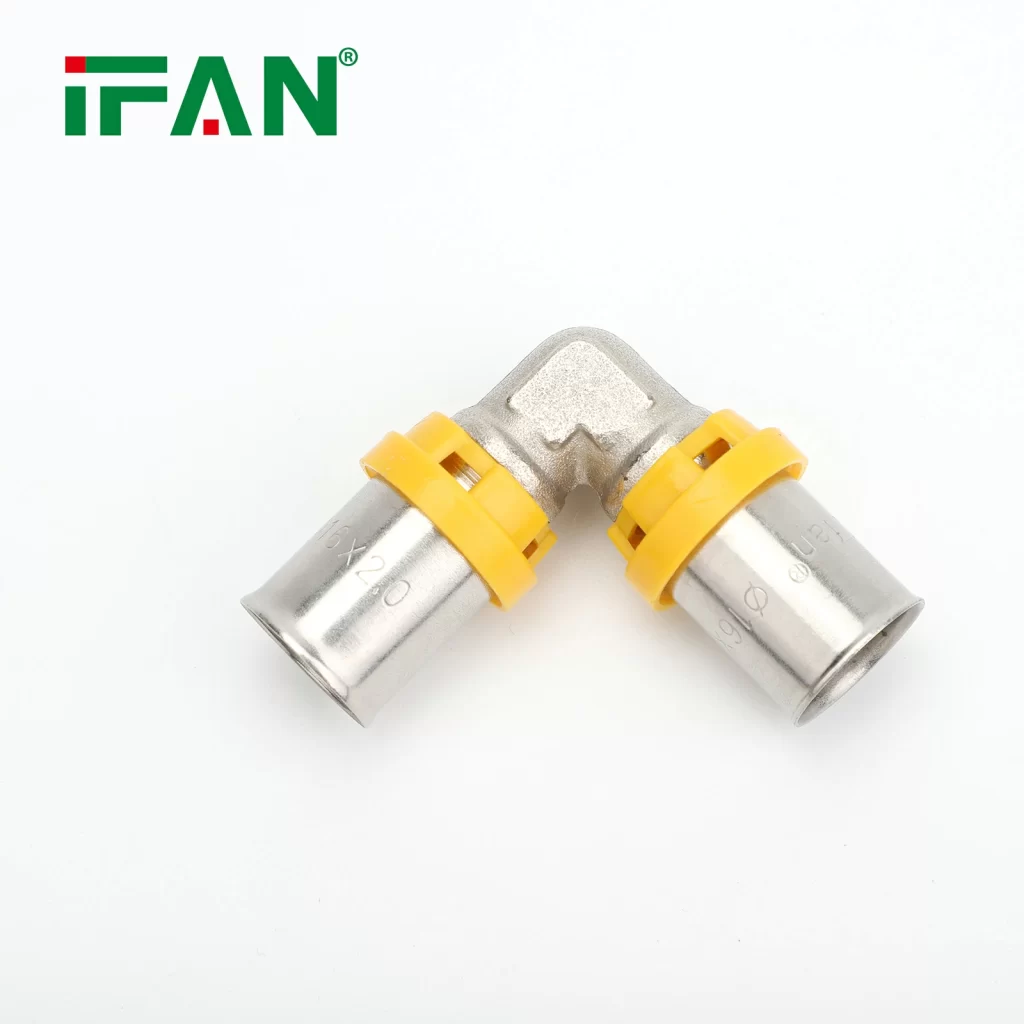The irrigation industry is undergoing a quiet revolution as pipe materials and connection technologies advance. Among these innovations, PEX press fittings have emerged as a game-changer, offering faster installations, improved durability, and better water efficiency compared to traditional irrigation piping methods.
In this article, we’ll explore the key benefits of modern irrigation pipe products—particularly those using PEX press fittings—and how they outperform older systems like PVC, galvanized steel, and crimp-style PEX.

Why Irrigation Pipe Technology Matters
Irrigation systems face unique challenges:
- Extreme weather conditions (freezing, UV exposure)
- High water pressure demands
- Long-term durability requirements
Older systems using glued PVC, threaded metal, or clamp-style PEX often fail due to leaks, corrosion, or labor-intensive repairs. Modern PEX press fittings solve these problems with:
✅ Faster, tool-free installations
✅ Leak-proof, corrosion-resistant connections
✅ Flexibility for complex layouts
Top 5 Benefits of Modern Irrigation Pipes with PEX Press Fittings
**1. *Faster, Easier Installation*
Traditional irrigation systems require:
- PVC: Primer, glue, and drying time
- Galvanized Steel: Threading and sealing compounds
- Crimp PEX: Manual crimping tools
PEX press fittings eliminate these steps—simply:
- Cut the PEX tubing
- Insert into the fitting
- Press with a tool (takes seconds)
Result: Up to 50% faster installation than glued PVC.
**2. *Superior Durability & Freeze Resistance*
- PEX material won’t corrode like metal or crack like PVC.
- Press fittings maintain a watertight seal even under ground movement.
- Flexible PEX tubing resists bursting in freezing temps (unlike rigid PVC).
Best for: Cold climates where winterization is a concern.
**3. *Reduced Leak Points*
- Press fittings create a uniform, gasket-free seal (unlike compression fittings).
- Fewer fittings needed due to PEX’s bendability.
- No glue failures (a common PVC issue).
Result: Up to 90% fewer leaks than traditional systems.
**4. *Lower Lifetime Costs*
| Cost Factor | Traditional PVC | PEX Press Fittings |
|---|---|---|
| Labor | High (gluing/curing) | Low (instant press) |
| Repairs | Frequent (cracked joints) | Rare (durable seals) |
| Water Waste | Common (leaks) | Minimal (sealed press connections) |
Long-term savings: Fewer callbacks + less water waste.
**5. *Eco-Friendly & Water-Efficient*
- No toxic solvents (unlike PVC glue).
- PEX is recyclable (unlike glued PVC systems).
- Leak-free = less water waste.
Ideal for: Sustainable farming, golf courses, and municipal irrigation.
PEX Press Fittings vs. Traditional Irrigation Piping
| Feature | PEX Press Fittings | PVC (Glued) | Galvanized Steel |
|---|---|---|---|
| Install Speed | ✅ Fastest (seconds per joint) | ❌ Slow (glue drying) | ❌ Very slow (threading) |
| Freeze Resistance | ✅ High (flexes without bursting) | ❌ Low (cracks easily) | ❌ Moderate (can corrode) |
| Leak Risk | ✅ Lowest (mechanical press seal) | ❌ High (glue failures) | ❌ Moderate (thread leaks) |
| Lifespan | ✅ 50+ years | ❌ 20-30 years | ❌ 15-25 years (rust) |
Verdict: PEX press fittings win for durability, speed, and leak resistance.
Applications in Modern Irrigation
1. Agricultural Irrigation
- Drip systems (flexible PEX adapts to crop rows)
- Pivot irrigation (durable against weather changes)
2. Golf Courses & Landscaping
- Underground mainlines (no corrosion vs. metal)
- Sprinkler feeds (quick repairs with press fittings)
3. Municipal & Park Systems
- Long-term reliability (minimal maintenance)
- Eco-friendly (no chemical solvents)
Future Trends in Irrigation Piping
- Smart Irrigation Integration – PEX press systems pair well with automated moisture sensors.
- Hybrid PEX/PVC Systems – Combining strengths for large-scale projects.
- Self-Pressurizing Fittings – Emerging tech for even faster field work.
Conclusion
The shift to PEX press fittings in irrigation delivers faster installs, fewer leaks, and lower lifetime costs compared to old-school PVC or metal piping. Whether you’re upgrading a farm system, golf course, or municipal water network, these advancements mean better performance with less labor.
For contractors and property managers, investing in PEX press-based irrigation isn’t just an upgrade—it’s the future of water efficiency.
FAQs About PEX Press Fittings in Irrigation
1. Can PEX press fittings handle high PSI for irrigation?
Yes—most are rated for 150+ PSI, exceeding typical irrigation demands (50-80 PSI).
2. Do I need a special license to install PEX press systems?
No, but training on press tools is recommended. Some states require irrigation licenses for commercial work.
3. How long do PEX press fittings last underground?
50+ years—PEX resists corrosion, and press seals outperform glued joints.
4. Are PEX press fittings more expensive than PVC?
Initially yes (20-30% higher), but labor savings and fewer repairs make them cheaper long-term.
5. Can I retrofit old PVC systems with PEX press fittings?
Yes—use transition fittings (PVC-to-PEX) to integrate new PEX lines into existing systems.
Upgrade your irrigation with PEX press fittings—where durability meets water efficiency.





